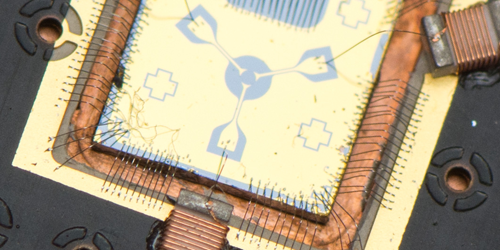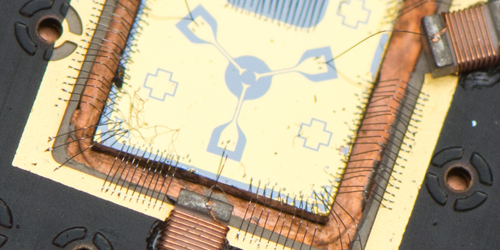Quantum Circulator on a Chip
Circulators are devices used to route signals in communication and computing systems. They have three or more ports, and allow power to travel in only one direction: a signal entering from port 1, 2, or 3 will exit from port 2, 3, or 1, respectively, with little loss. Integrated on a chip, they could allow quantum-computing schemes to be scaled up. Now, David Reilly at the University of Sydney and colleagues have made a circulator that fits on a chip and has better signal directionality than most available devices.
The directional, or nonreciprocal, nature of a circulator requires a mechanism of symmetry breaking. Typically, this occurs through a combination of wave-interference effects and the nonreciprocal radiation-polarization rotation due to a magnetic field. But such interference-based devices have the same size scale as the signal wavelength. Reilly and co-workers realized a 2014 proposal that involves a different nonreciprocal phenomenon—the quantum Hall effect. The circulator is made of microwave transmission lines integrated on a chip in which a two-dimensional electron gas forms at the interface between two semiconductors. The nonreciprocity is achieved by coupling the microwave signals with standing waves that, in a quantum Hall regime, form at the edge of the electron gas in an applied magnetic field.
The device features efficient nonreciprocal operation at the signal frequencies and magnetic fields commonly used for the read out of spin quantum bits. What’s more, it can be dynamically controlled: the frequency and direction of circulation of the signals can be tuned in real time by applying a dc voltage or by varying the magnetic field.
This research is published in Physical Review X.
–Matteo Rini
Matteo Rini is the Deputy Editor of Physics.





